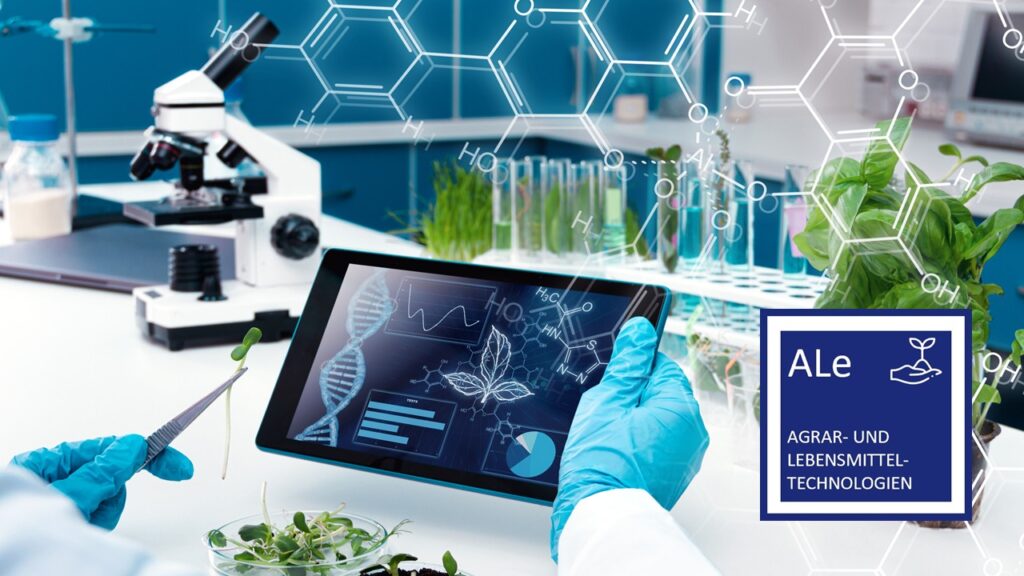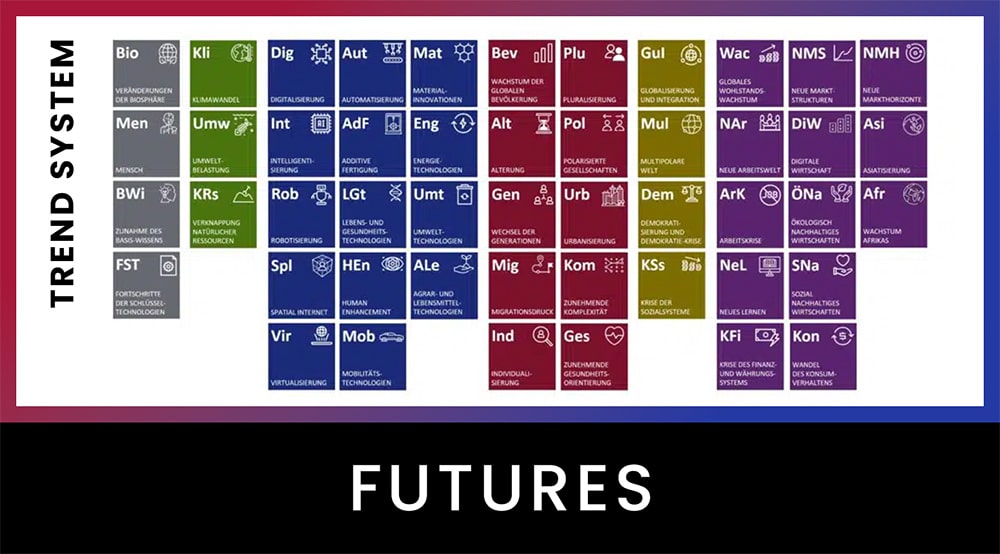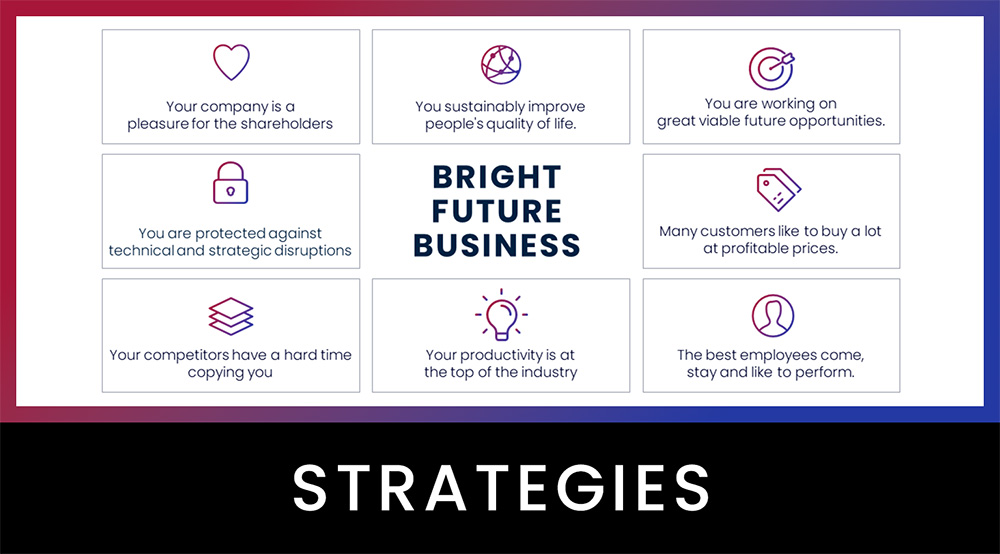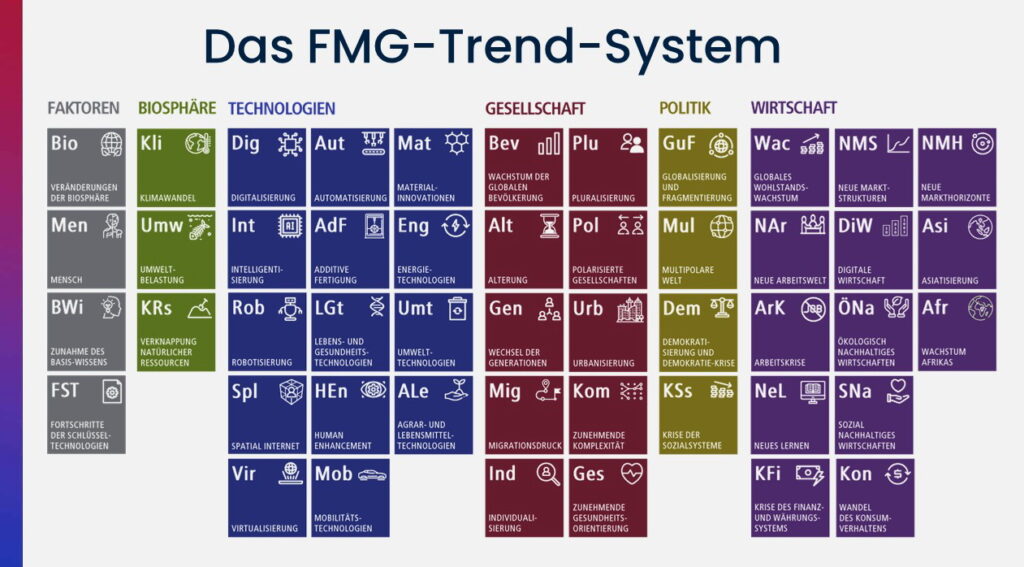Megatrend agricultural and food technologies
From the FMG Trend System: For your future-proof company
Agricultural and food technologies as drivers of change
Agricultural and food technologies are at the heart of overcoming global challenges: Population growth, climate change, resource scarcity and increasing health awareness are fundamentally changing the demands placed on agriculture and nutrition.
Technological innovations enable a more efficient, resource-conserving and resilient agricultural sector as well as healthier and more sustainable food systems. Companies that adapt new technologies at an early stage can not only contribute to security of supply, but also open up new areas of business. To the overview of all megatrends

What do agricultural and food technologies mean for companies?
Agricultural and food technologies offer companies a wide range of opportunities to position themselves for the future: Innovation potential along the value chain: new processes in cultivation, processing, packaging and logistics increase efficiency and quality – and create competitive differentiation. Growing markets and changing consumer needs: The demand for sustainable, healthy and functional food is growing worldwide. Those who focus on new products and processes at an early stage will secure decisive market advantages. Conserving resources and reducing costs: Technological progress in agriculture helps to reduce the use of fertilizer, water and energy – and at the same time contributes to climate protection.
- Agricultural and food technologies and other technologies are the strongest change trends alongside human motives. We use our tools to shape the world, mostly to our advantage.
- The agricultural and food technology megatrend is just one of many that could be relevant to the future of your business.
- In addition to megatrends from the biosphere, society, politics and the economy, FMG’s trend system also includes the drivers that trigger trends such as agricultural and food technologies, the future factors. To the overview of all megatrends
Key developments in agricultural and food technologies
1. agricultural innovations
Innovations in agriculture aim to increase productivity and protect the environment at the same time. The focus is on resource-efficient processes, adapted plants and intelligent systems. The goal is climate-resilient, productive and resource-conserving agriculture.
Relevant sub-aspects:
Irrigation technologies: Drip irrigation and sensor-based systems increase water efficiency.
Soilless plant cultivation: hydroponics and aeroponics enable space-saving, water-saving and year-round cultivation – even in urban areas.
Plant technology: transgenic plants, genome editing (e.g. golden rice) or modified plants for the production of raw materials increase yields and food security.
Tilling: Chemical mutagenesis as an alternative to genetic engineering leads to precise plant selection without the genetic engineering debate.
2. new foods
Changing nutritional needs, sustainability and technology are driving the development of new types of food.
Relevant sub-aspects:
Functional food: Food with health-promoting additives such as probiotics, omega-3 fatty acids or fortified vitamins.
Insect-based foods: Insects as a source of protein are considered an environmentally friendly and nutritious alternative to meat.
Laboratory meat (cultivated meat): Meat products from cell cultures are intended to replace factory farming – animal-friendly, scalable, low-emission.
Plant-based meat alternatives: Increasingly mature meat and dairy alternatives based on soy, pea, oats or fermentation.
Precision fermentation: Genetically modified microorganisms are used to produce specific proteins and enzymes for alternative foods. Examples include cheese substitutes or egg proteins without the use of animals.
3. precision farming
Agriculture is becoming smart – thanks to sensors, satellites, AI and automated machines. This opens up new possibilities for monitoring and controlling agricultural processes.
Sub-trends and technologies:
GPS-supported navigation: Machines move precisely in the field, minimize losses and conserve resources.
Field robotics & drones: They take over tasks such as sowing, fertilizing or harvesting – efficiently and based on data.
Real-time data & AI: Data from sensors, weather services or soil analyses flow into intelligent decision-making models.
Sub-area-specific management: Resources are used in a targeted and differentiated manner where they are needed.
4. urban agriculture
Urban agriculture brings agriculture to where the demand is greatest: to the cities. New concepts and technologies enable local, sustainable supply.
Relevant sub-aspects:
Vertical farming: integration of greenhouses in high-rise buildings (“skyscraper farming”).
Indoor farming: use of vacant buildings for closed-loop cultivation systems.
Aquaponics & urban hydroponics: combination of fish farming and plant cultivation in the smallest of spaces.
Urban greening with a food function: Rooftops and brownfields provide fresh food locally and increase the climate resilience of cities.
Conclusion: Using agricultural and food technologies as an opportunity
Agricultural and food technologies are key to the transformation of the global food system and therefore an economic market of enormous importance for the future.
Companies that invest today in sustainable farming methods, digital agriculture and new types of food are securing competitive advantages in a market that is being driven and opened up by regulation, consumer change and technological disruption.
The dynamics range from new revenue models for agricultural technology providers to the platform economy for urban food production, with massive growth opportunities along the entire value chain.
- With the Future Radar Program, you can identify which aspects of agricultural and food technologies will be relevant for your company in the future and how you can use them as a strategic opportunity.



































